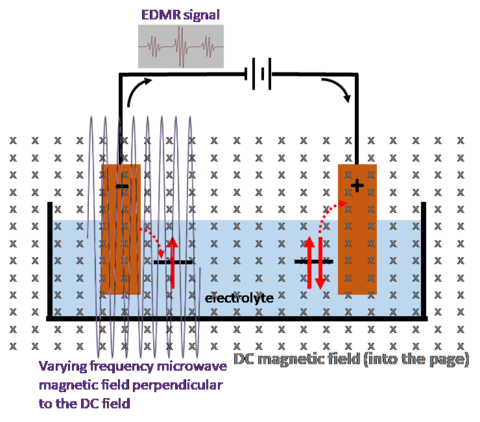Summary
Electrochemical processes are ubiquitous. Man-made processes such as energy production by solar cells and battery charging and discharging are examples of charge-transfer processes. Everyday life is full of oxidation-reduction (charge-transfer) processes: burning of anything; corrosion; photosynthesis by plants; cellular respiration; digestion of food ... Even the memory used in our smart phone relies on it. It is therefore easy to understand why there has been a vast amount of studies on the details of the electrochemical processes. However, there are still a lot we do not understand. This is because the charge transfer process is very fast in most cases. Thus, it is difficult to study the process while it happens. Most of what we understand comes from studying the products (intermediate or end) of the process and work backward to infer what happens. This works well in many cases, but sometimes it fails. This program aims to develop methods to measure the charge transfer processes while they happen.
Description

EDMR set up to measure the electrode process of an electrochemical cell. For charge transfer, the specie either start starts with an unpaired electron to receive an electron of the opposite spin or with an electron pair with opposite spins to give up on the electron to become unpaired.
There are two ways to study a very fast process such as charge transfer. One can use very high-speed measurement that can follow the effect of the process, or one use a method that is sensitive only to the process itself. Either way has its weakness. Many fast measurements can follow the process physically but lack the ability to gain chemical or structural information of the specie involved. Method that is sensitive to the process specifically tends to have weak signal because of the briefness of the period that a signal is produced. The best is to combine the two.
An example of very high-speed measurement of charge transfer into and out of a broken bond site in a solid-state device is ultra-fast current-voltage (I-V) measurement of a nanoscale device after it has been electrically stressed (creation of broken bond sites). We have been developing and perfecting this type of measurements (very fast electrical characterizations of solid-state devices) for many years. Measurement speed has progressed from microseconds to picoseconds. While these measurements are extremely sensitive, other than telling us the existence of the broken bond and its energy level, information on the chemical and structural nature of the broken bond is completely lacking.
To get chemical and structural information specific to the charge transfer process, we recently turned to a technique called electrically-detected-magnetic-resonance (EDMR). This technique uses electron-spin-resonance (ESR) to detect molecules with unpaired electrons and can give chemical and structural information of the atom associated with the unpaired electron as well as its environment. Unlike conventional ESR, the EDMR detect the resonance signal from the current resulting from the charge transfer process and therefore achieving specificity.
EDMR technique has been around, but only applied to solid-state devices. We aim to bring this technique to a broader range of system and aim to demonstrate it in an electrochemical cell. Specifically, we apply the EDMR technique to study the electrode process. As either losing an electron or gaining an electron (oxidation or reduction) at the electrodes, an unpaired electron state is always involved, this make the charge transfer process ESR active. Measuring the ESR signal from the electrode current ensures that any observed signal is purely from the charge transfer process.
To develop a new spectroscopy is always challenging. One example is that to observe any signal the electrode current must be controlled by the charge transfer process. Otherwise, modulation in current by the ESR resonance will not have any effect. However, electrode current is in the diffusion-controlled regime most of the time. Only at the very short time after a step potential is applied to the electrode is the current not under diffusion control and only during that brief moment one can expect the observation of EDMR signal. A novel transient EDMR spectrometer with small permanent magnet is purpose-built to solve this and other problems.
EDMR combines the speed and sensitivity of electrical measurements and the chemical and structural information capability of ESR. It will enable us to investigate the details of the charge transfer process in a variety of systems.

